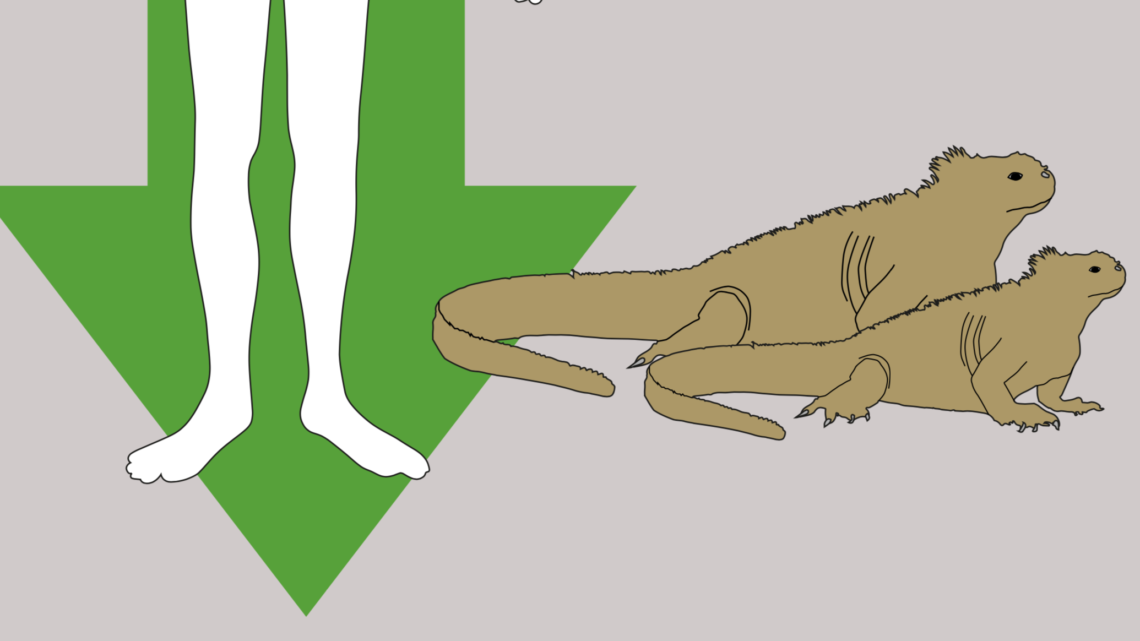The Shrinking Iguana
September 20, 2010
Much to his surprise, an evolutionary biologist at Princeton University has found that in times of famine, marine iguanas in the Galápagos Islands shrink in length and then regrow when food is plentiful again.
“For vertebrates, it’s sort of a dogma that they don’t shrink,” says Martin Wikelski, who believes closer observations will reveal other shrinking animals. Since 1987, Wikelski, a professor of ecology, ethology and evolution has been flipping over Galápagos marine iguanas, stretching them out on their backs and measuring their snout-to-anus length. By branding the iguanas, Wikelski tracks individuals through many years. On one island, iguanas grew up to 16 inches long — not including their tails — and 7½ pounds. During the long 1997-98 El Niño, the red and green algae the iguanas eat were more scarce. To survive some of the iguanas shed more than one-third of their weight and shrank in length by up to 20 percent. To put such decreased size in perspective: that’s the equivalent of a hungry Shaquille O’Neal dwindling from 216 cm to 177 cm. “That’s way beyond any measurement error.” Wikelski says. That’s also too much to be explained by the shrinking of just cartillage and connective tissue. Wikelski hypothesizes the iguanas literally digest part of their bones.
Also see The Dehnel Phenomenon.
[…] a reversal of size could also be achieved in the opposite direction, from tall to small. We know animals can. ‹Previous Post Voluntary […]
[…] people were able to shrink up to 20% of their regular body size in times of food scarcity like the marine iguanas of the Galapagos? What if we could adopt the bonsai tree’s ability to arrest growth through […]
[…] If we’re able to take this first step there’s no limit to the things we could learn: things like shrinking. ‹Previous Post Land […]
[…] Interestingly, they shrink in anticipation, before the actual scarcity arrives , unlike the Marine iguana of the Galapagos islands who shrink as a consequence of such scarcity during El Nino global warming events. A recent study of […]